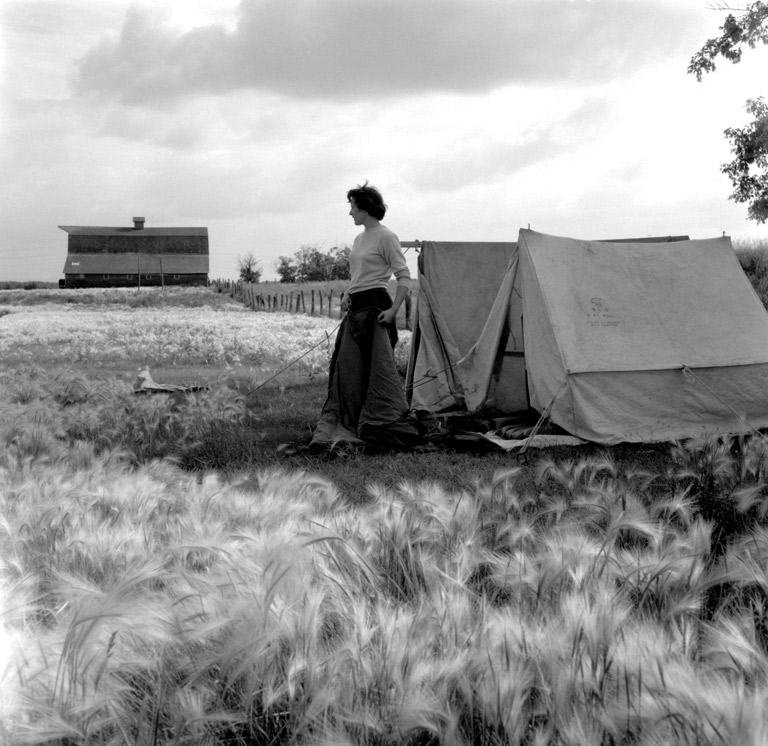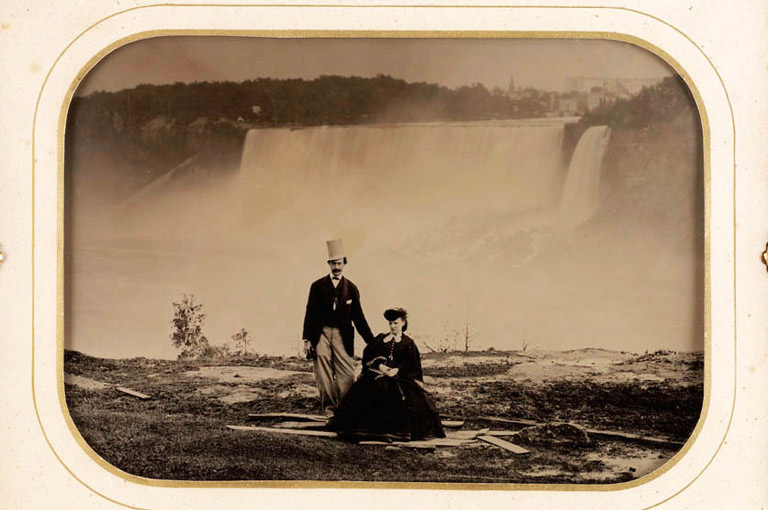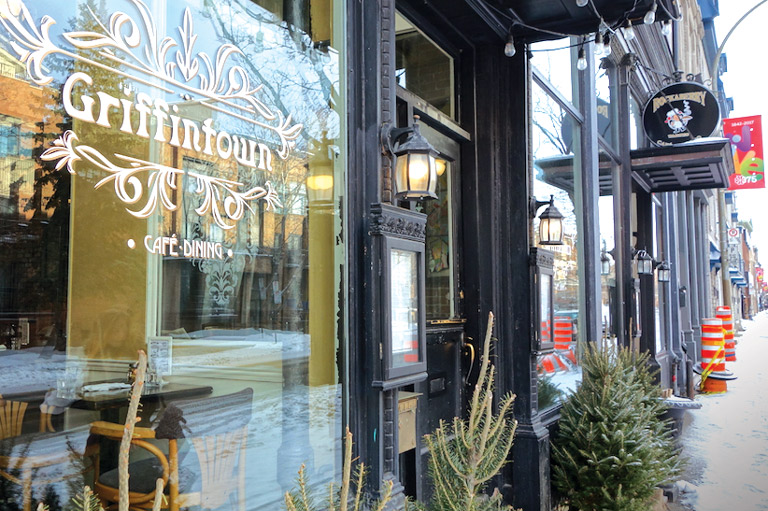Discover a wealth of interesting, entertaining and informative stories in each issue, delivered to you six times per year.
Trans-Canada travels

This photo was taken outside of Portage la Prairie, Manitoba, in the summer of 1954 by Rosemary Gilliat.
A freelance photographer and then-recent emigrant from England, Gilliat documented — in more than eight hundred photographs — her thirty-eight-day trans-Canada trip from Ottawa to Vancouver.
Though campgrounds were gaining popularity by the 1950s, and roadside motels were popping up across the country, Gilliat and the three girlfriends with whom she travelled sought secluded areas off the highway to make camp. Gilliat did not want to travel thousands of kilometres “to have all the luxuries they have at home in a different setting.”
In post-Second World War Canada, economic growth made automobiles more affordable, and romance for the open road flourished alongside the desire for roads on which to travel.
The Trans-Canada Highway Act, passed in 1949, provided millions of dollars in federal cost-sharing funding to the provinces. What eventually resulted was the Trans-Canada Highway, cobbled together from various existing and newly built roadways across the provinces.
But in 1954 Gilliat and her friends experienced a highway very much under construction, encountering areas that were little more than a rutted dirt track or towering rocky lanes through the mountains of British Columbia. The Trans-Canada Highway would not be formally opened until 1962.
Gilliat continued her work as a freelance photographer after the trip, taking photographs for, among others, Canadian Geographic, Maclean’s, the National Film Board, and even The Beaver magazine.
Themes associated with this article
You might also like...

Canada’s History Archive, featuring The Beaver, is now available for your browsing and searching pleasure!







